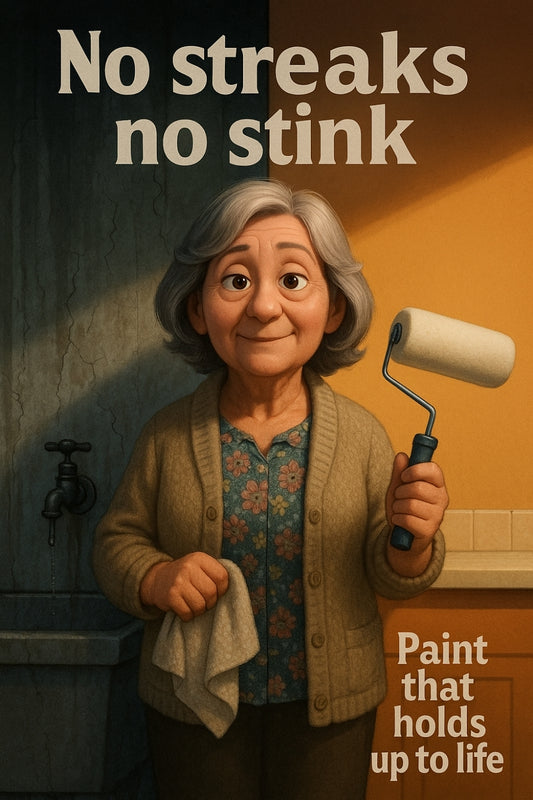
How to Avoid Lap Marks When Using Rollers
Share
Simple Ways to Avoid Lap Marks When Painting with a Roller
Few things are more frustrating than finishing a paint job only to step back and see uneven stripes across the wall. Lap marks happen when wet and dry layers of paint overlap, leaving behind an uneven finish. The good news? They're easy to avoid with the right techniques and tools! Let’s talk through some simple ways to get that smooth, professional-looking finish.
Use the Right Paint for Even Coverage
The quality of your paint matters. A high-quality product spreads smoothly and gives better coverage, reducing the risk of lap marks. Haymes Ultra Premium Expressions Low Sheen Paint is a great option for interior walls. It has excellent coverage, meaning you won’t have to go over the same spot too many times.
Keep a Wet Edge
Lap marks often appear when the paint starts drying before you finish an area. The trick? Work in sections and keep a "wet edge" by slightly overlapping each roll into the still-wet paint. Try to avoid taking long breaks while painting a wall—this lets portions dry and creates the issue you're trying to prevent.
Use the Right Roller
Believe it or not, your choice of roller matters too. A roller with the right nap thickness for your surface holds enough paint to spread consistently. For smooth walls, a shorter nap (around 6mm) is best, while textured surfaces need a longer nap. A good quality roller, like the Haymes Paint Roller Kit, gives you even coverage and helps prevent those streaky marks.
Avoid Too Much Pressure
Applying too much pressure when rolling can leave uneven paint distribution. The goal is to let the roller do the work! Load up your roller evenly and roll in a "W" or “M” shape to distribute the paint before smoothing it out. This technique ensures the paint settles evenly across the surface.
Feather the Edges
If you’re painting large areas, feathering your strokes helps blend everything seamlessly. This simply means lightening up the pressure as you near the end of a stroke, so there’s no harsh edge where wet paint stops. This method makes blending those overlapping sections much easier.
Use a Primer if Needed
When repainting a dark or patchy surface, a primer helps create an even base coat. Without it, some areas may absorb paint faster than others, leading to visible streaks. Something like Haymes Ultra Premium Acrylic Sealer Undercoat gives your wall an even base for a flawless finish.
Work in Manageable Sections
Instead of attempting to paint an entire room in one go, focus on one section at a time. Working in vertical sections helps maintain consistency and ensures each part is blended while the paint is still wet.
Finish with Backrolling
Backrolling means lightly rolling back over a painted section without adding more paint. This final step helps smooth out any uneven areas before the paint starts drying. It’s a simple trick that makes a big difference in achieving a uniform finish.
Final Thoughts
By using quality paint, the right tools, and a few simple techniques, you can achieve a smooth, professional-looking finish free of streaks and lap marks. A little planning and patience go a long way in making your walls look amazing. So grab your roller, take your time, and enjoy the satisfaction of a perfectly painted room!
Happy painting!
Candeece

Stay Connected
Follow our Facebook Page: Strathalbyn H Hardware on Facebook



